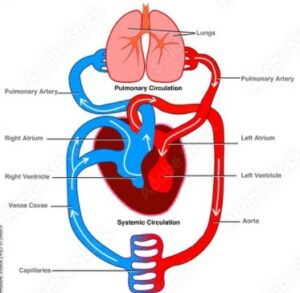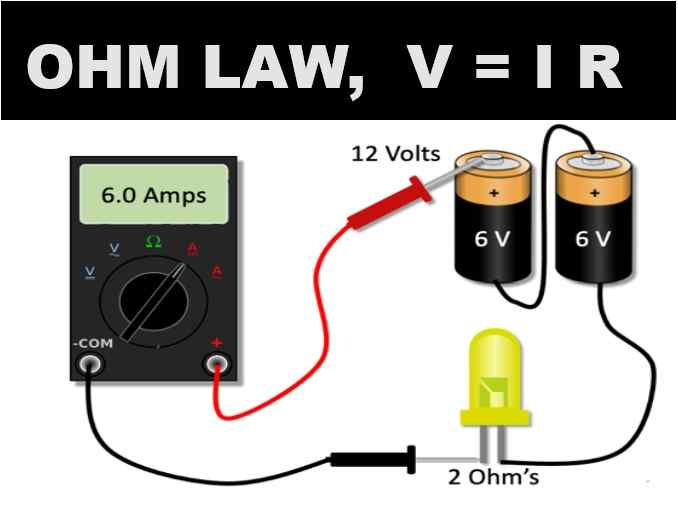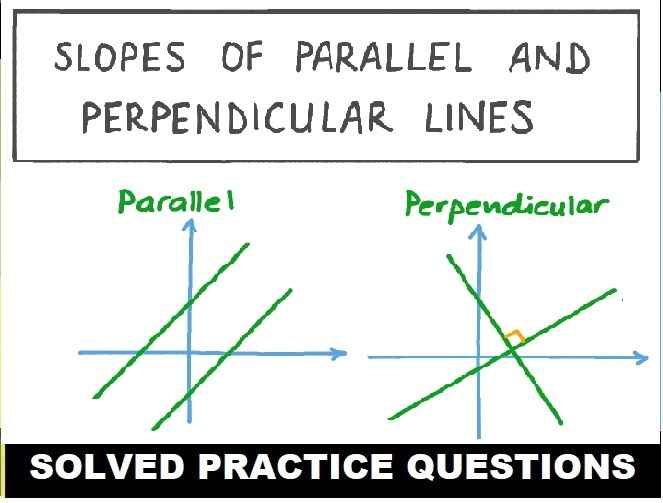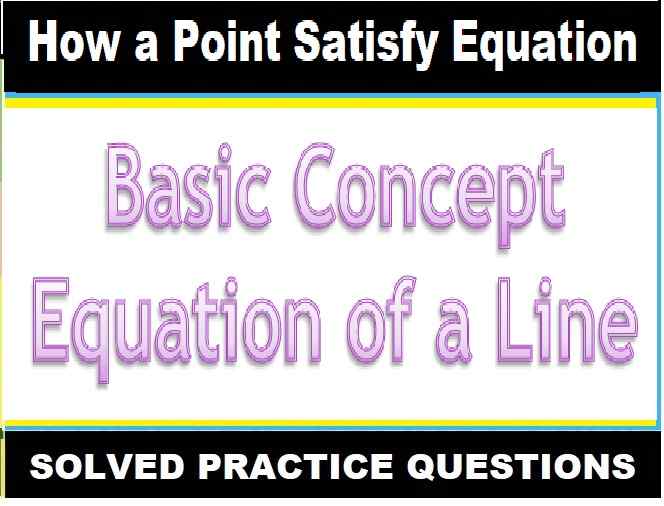MCQ Circulatory System Class-10 for ICSE Biology Sec-A Sem-2 . These MCQ / Objective Type Questions is based on latest reduced syllabus according 2021-22 session on bifurcated pattern. Main motto of MCQ Type Question is cracking the next upcoming Sem-2 exam of council. Visit official website CISCE for detail information about ICSE Board Class-10 Chemistry .
MCQ Circulatory System Class-10 for ICSE Class-10 Sec-A Sem-2

| Board | ICSE |
| Class | 10th (X) |
| Subject | Biology |
| Chapter | Circulatory System |
| Syllabus | on bifurcated syllabus (after reduction) |
| Session | 2021-22 |
| Bifurcated | Sem-2 |
| Topic | MCQ / Objective Type Question for Sec-A |
Sec-A Sem-2 ICSE Class-10 Biology MCQ Type Questions of Circulatory System
Question 1: Non-granular WBCs are:
(a) lymphocytes and monocytes
(b) lymphocytes and basophils
(c) eosinophils and basophils
(d) eosinophils and monocytes
Answer (a) lymphocytes and monocytes
Question 2: White blood cells engulf bacteria in a process called:
(a) diapedesis
(b) phagocytosis
(c) active transport
(d) passive transport
Answer (b) phagocytosis
Question 3: The nearest organ to which the heart supplies oxygenated blood is
(a) Lung
(b) Stomach
(c) Intestine
(d) Heart itself
Answer (d) Heart itself
Question 4: The normal diastolic blood pressure in a normal healthy adult human is
(a) 80 mm Hg
(b) 60 mm Hg
(c) 90 mm Hg
(d) 110 mm Hg
Answer (a) 80 mm Hg
Question 5: ______ is a blood disorder where the haemoglobin is defective
(a) Heterochromia
(b) Alopecia
(c) Hemolysis
(d) Sickle cell anemia
Answer (d) Sickle cell anemia
Question 6: Which of the following two-word items mean the same thing?
(a) Blood cancer – Hemophilia
(b) Pacemaker – S A Node
(c) Osteoporosis – arthritis
(d) None of the above
Answer (b) Pacemaker – S A Node
Question 7: In adult humans, _______ of lead or less in the blood is considered to be normal.
(a) 40µg/dL
(b) 20µg/dL
(c) 10µg/dL
(d) 50µg/dL
Answer (c) 10µg/dL
Question 8: In humans, ____________ is the difference between systolic and diastolic pressure.
(a) 40 mm Hg
(b) 20 mm Hg
(c) 0 mm Hg
(d) None of the above
Answer (a) 40 mm Hg
Question 9: Non-granular WBCs are:
(a) lymphocytes and monocytes
(b) lymphocytes and basophils
(c) eosinophils and basophils
(d) eosinophils and monocytes
Answer (a) lymphocytes and monocytes
Question 10: White blood cells engulf bacteria in a process called:
(a) diapedesis
(b) phagocytosis
(c) active transport
(d) passive transport
Answer (b) phagocytosis
Question 11: The nearest organ to which the heart supplies oxygenated blood is
(a) Lung
(b) Stomach
(c) Intestine
(d) Heart itself
Answer (d) Heart itself
Question 12: When a doctor is recording your pulse, he is pressing on your wrist exactly on a
(a) vein
(b) capillary
(c) artery
(d) arteriole
Answer (c) artery
Question 13: Angina Pectoris is due to
(a) defective nutrition
(b) chest pain due to inadequate supply of oxygen to the heart muscle
(c) defective functioning of mitral valve
(d) infection by a virus
Answer (b) chest pain due to inadequate supply of oxygen to the heart muscle
Question 14: The function of WBC is:
(a) To distribute heat
(b) To protect enzymes
(c) To cause blood clotting
(d) To destroy bacteria
Answer (d) To destroy bacteria
Question 15: Agranulocytes are:
(a) Lymphocytes, monocytes
(b) Lymphocytes, basophils
(c) Eosinophils, basophils
(d) Eosinophils, monocytes
Answer (a) Lymphocytes, monocytes
Question 16: The chief function of lymph nodes in mammals is to:
(a) Produce WBCs
(b) Produce hormones
(c) Destroy old RBCs
(d) Destroy pathogens
Answer (d) Destroy pathogens
Question 17: What will happen if the spleen of a man is removed?
(a) W.B.C. production will be lowered
(b) Removal of dead RBC will not take place
(c) Antibody production will be decreased
(d) R.B.C. production will be stopped
Answer (a) W.B.C. production will be lowered
Question 18: Which protein is used in preventing clotting of blood?
(a) Albumin
(b) Heparin
(c) Fibrinogeri
(d) Globulin
Answer (b) Heparin
Question 19: The impulse of heartbeat originates from :
(a) SA node
Answer : (a) SA node
Answer : (a) Semilunar valves
Question 24: When a doctor is recording your pulse, he is pressing on your wrist exactly on a
(a) vein
(b) capillary
(c) artery
(d) arteriole
Answer : (c) artery
Question 25: The blood vessel supplying blood to the kidney is
(a) renal vein
(b) renal artery
(c) dorsal aorta
(d) hepatic vein
Answer : (b) renal artery
Question 26: Angina Pectoris is due to
(a) defective nutrition
(b) chest pain due to inadequate supply of oxygen to the heart muscle
(c) defective functioning of mitral valve
(d) infection by a virus
Answer : (b) chest pain due to inadequate supply of oxygen to the heart muscle
Question 27: The chief function of lymph nodes is to
(a) produce WBCs
(b) produce hormones
(c) destroy old RBCs
(d) destroy pathogens
Answer : (d) destroy pathogens
Question 28: Heart sounds are produced due to
(a) closure of tricuspid and bicuspid valves
(b) rushing of blood through valves producing turbulence
(c) closure of atrioventricular and semilunar valves
(d) entry of blood into auricles
Answer : (c) closure of atrioventricular and semilunar valves
Question 29: The chief function of lymph nodes is to
(a) produce WBCs
(b) produce hormones
(c) destroy old RBCs
(d) destroy pathogens
Answer : (d) destroy pathogens
Question 30: The beating of the heart of man is heart on the left side, because:
(a) The left ventride is towards the left side
(b) Both the ventricles are towards the left side
(c) Contraction of heart is powerful on left side
(d) The dorsal aorta is on the left side
Answer : (c) Contraction of heart is powerful on left side
Question 31: Typical ‘lubb-dupp’ sounds heard during heartbeat are due to :
Answer : (d) Sphygmomanometer
Question 35: ___________ is a small branch of an artery that leads into a capillary.
(a) Capillaria
(b) Areolas
(c) Arteriole
(d) None of the above
Answer : (c) Arteriole
Question 36: Humans use haemoglobin to carry oxygen in their blood. Similarly, mollusks and crustaceans use _____________ to carry oxygen in their blood.
(a) Hemovanadin
(b) Hemerythrin
(c) Haemoglobin
(d) Hemocyanin
Answer : (d) Hemocyanin
Question 37: Severe loss of blood due to trauma is called
(a) Exsanguination
(b) Haemolysis
(c) Concussion
(d) None of the above
Answer : (a) Exsanguination
Question 38: ___________ is a condition where a blood clot forms in the circulatory system.
(a) Thrombus
(b) Strombus
(c) Hematoma
(d) None of the above
Answer : (a) Thrombus
–: End of Circulatory System MCQ Type Question :-
-: also visit :-
- Subjective / Descriptive Type Questions (Sec-B) of Sem-2 for ICSE Class-10
- Please visit Sem-2 Specimen / Model / Sample Paper for ICSE Class-10
- ICSE Class-10 Text book Solutions, Notes , Syllabus, Paper, Notes
- ICSE Board Paper Class-10 Solved Previous Year Question
Please share with your ICSE friends if it is helpful
Thanks


